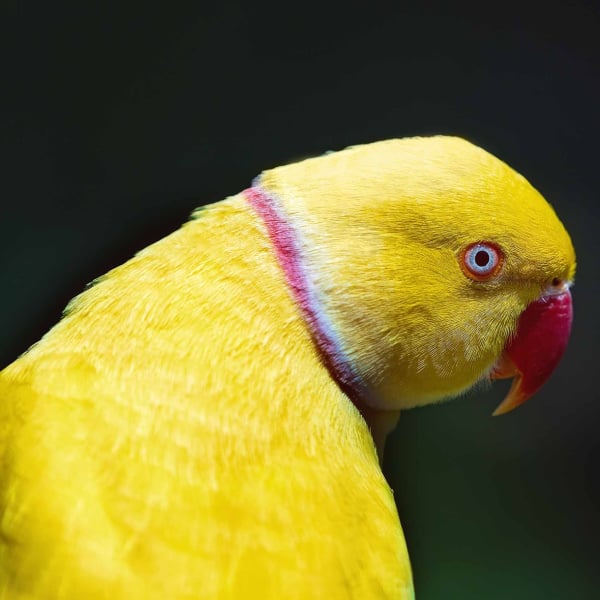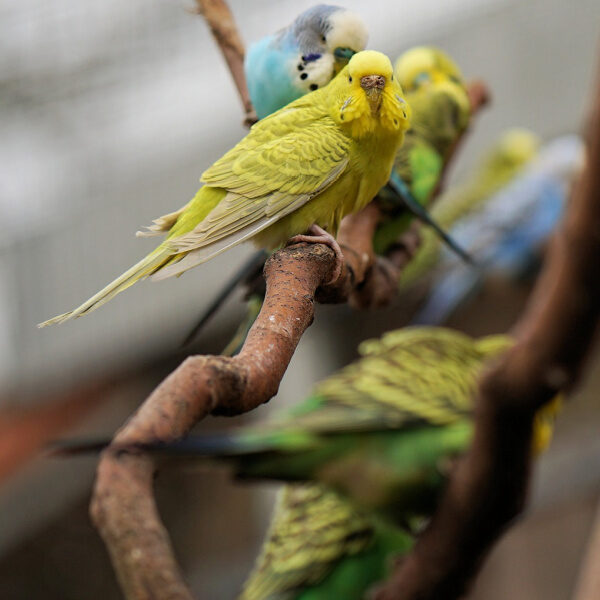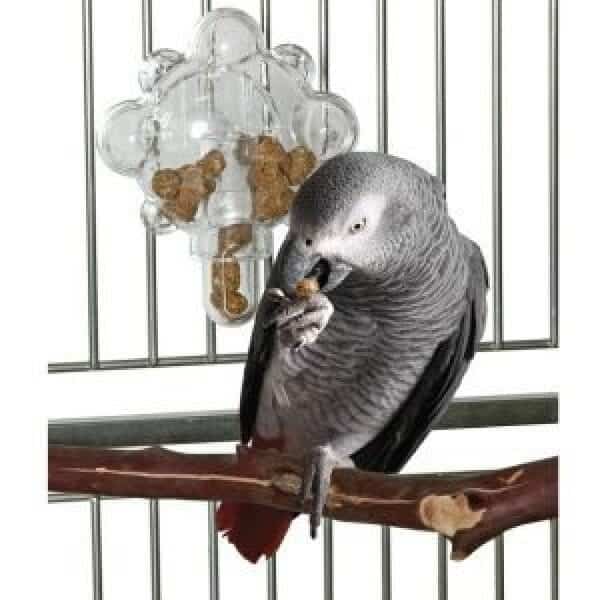
Yellow Indian ring neck parrot in close up isolated against a dark background
Suggestions for Disabled Indian Ringneck
Last Updated on by Mitch Rezman
Cindy S. wonders,
I was wondering if there is something you might recommend for my Indian Ringneck.
I adopted her about a month ago. I don’t know how old she is, but she was thrown out of a moving car and a rescue took her in.
At the rescue, another bird bit her and she had to have her foot amputated.
I had my lower leg amputated in 2012, so I felt I had to take her 🙂
From what I understand, she was adopted and spent about a year in that home, but the woman who adopted her got cancer and had to give her back to the rescue.
She came to me with fuzzy feathers on her body and only a couple of tail feathers and wing feathers. Her feathers are looking a bit smoother, but the wing and tail feathers coming in look pretty scruffy. Do you know of any products that might help her? It’s not a plucking problem; I’m just hoping for something that might encourage healthy feather growth. Thanks for any input you can give me. Cindy
Dear CindyIt sounds like the bird was not given enough of what it needed while it was in the care of the other person who became ill. Likely she was left alone a lot. Her diet may have been poor, lived in too small of a cage, had no toys, was lonely, I cannot say. Most likely it is a plucking problem, the feathers rarely would come out like that normally. Even if the nutrition was poor.
I admit to having had an IRN years ago and when I divorced and took my bird, I had to work out of the house more and he got lonely, even if I boarded him with a friend, he missed me. He developed a plucking problem. It never fully went away even after more attention, taking him to and from work on trips, etc. I tried Pluck No More, which helped for a short while, but after a year it no longer was effective, he was a plucker and I still loved him until he passed a few years ago
Since then there have been never products on the market to try and we have heard good results from them.
A good diet, a new cage, lots of love and attention, and hopefully she will recover enough to be a wonderful pet.
Let me know if you have any further questions.
Thank you
Catherine
Thanks Catherine, I’m really looking forward to looking at the videos for handicapped birds.
I was told this bird was severely plucked when she came into the rescue after being thrown out of the moving car – obviously, she was not cared for.
I have never seen her pluck or found feathers in her cage since I’ve had her, but she is easily startled and her wing and tail feathers break fairly often.
I’ve got her in a much better cage than she was in before (long and low rather than tall and narrow) and she’s got toys although she isn’t interested in them. I’m hoping with time she’ll become more interested.
I’m really hoping that eventually, she’ll be able to fly, but not sure that will happen. At least she’s a good eater – she eats Nutriberries, Roudybush pellets, a seed mix similar to a Goldenfeast mix (the bird shop owner puts it together himself), and she loves her fresh fruits and veggies.
I really appreciate you taking the time to answer my e-mail and giving me some good products to try.
Thanks you!
Cindy
Thank you and I hope your parrot recovers enough for you to have a long and happy time together. Try small toys that are not toys, she might like tiny things, a plastic spoon, a clean popsicle sticks, a straw with paper on it, just lay them out where she can find them.
My own IRN loved a small squeaky toy and carried it around everywhere. But I am having a hard time getting them back in stock.
Let me know how the progress goes. I can be contacted directly at [email protected].
Thank you
Catherine
Author Profile
Latest entries
 The Traveling BirdJune 26, 2025Can You Name 5 Parrot Species That Are Living Wild in the USA?
The Traveling BirdJune 26, 2025Can You Name 5 Parrot Species That Are Living Wild in the USA? Bird BehaviorJune 26, 2025How is it Parrots Are Problem Solvers Social Animals and Even Use Tools?
Bird BehaviorJune 26, 2025How is it Parrots Are Problem Solvers Social Animals and Even Use Tools? Bird & Parrot AnatomyJune 25, 2025How a Tiny Chemical Modification Makes Parrots Nature’s Living Paintings
Bird & Parrot AnatomyJune 25, 2025How a Tiny Chemical Modification Makes Parrots Nature’s Living Paintings PigeonsJune 20, 2025How Do Parrots Thrive in Cities Outside Their Native Habitats?
PigeonsJune 20, 2025How Do Parrots Thrive in Cities Outside Their Native Habitats?


